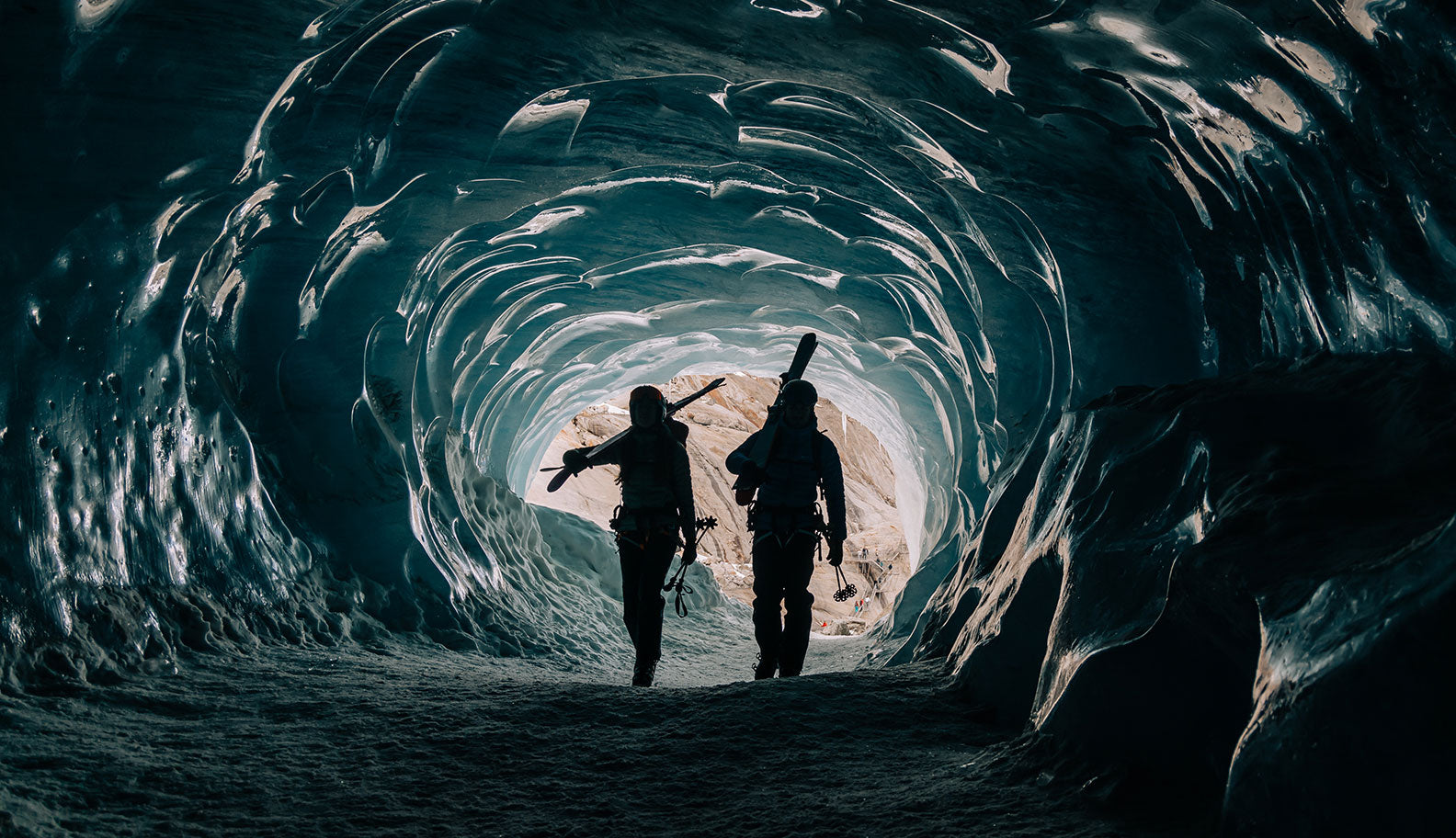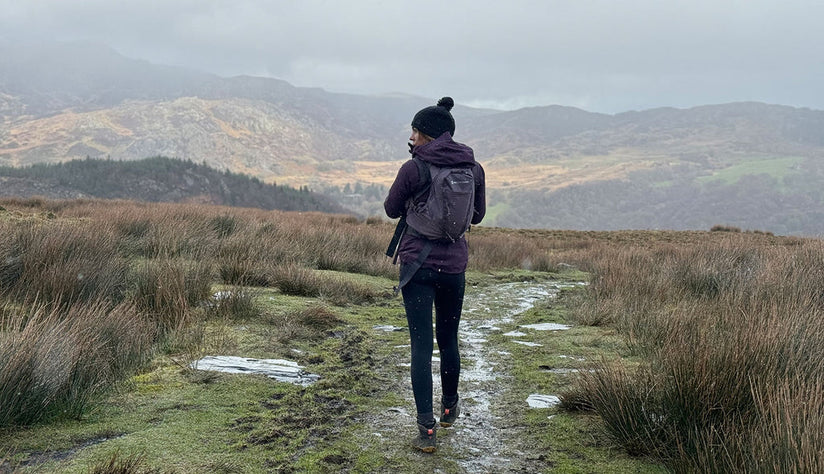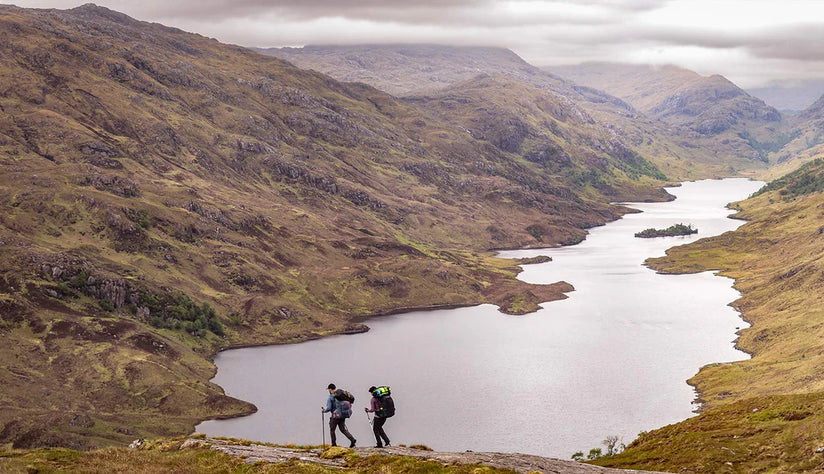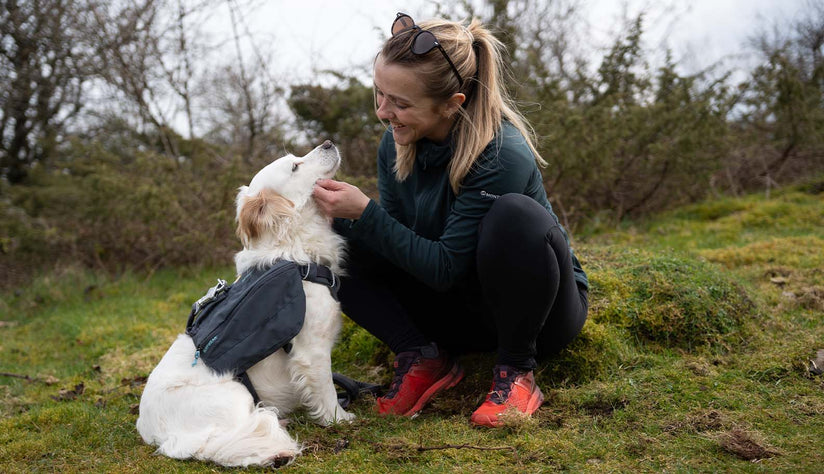At Montane, the mountains are where we feel most at home. These mighty summits provide us with boundless adventure all through the seasons. Whilst we love spending long summer days exploring these mighty playgrounds, the winter months are particularly special, bringing with it snow and a whole new thrilling way to navigate…
For many, it’s time to dig out that essential ski gear and get that much-anticipated ski holiday booked. However, a growing number of skiers are looking to explore the quieter side of these mountain ranges, far from the bright lights of commercial ski resorts. Cue ski touring - an activity that offers the chance to get off the beaten track in search of skiing solitude, an opportunity to truly find your unknown this season.
To talk us through the basics of ski touring we caught up with Jess Clarke, an adventure athlete with a passion for all things alpine (and an aversion to stereotypes.) She learned to ski aged 4 in St Anton and returned to the Arlberg at 18 to work a season. It was here that she fell in love with ski touring and alpinism. Jess is now based in Chamonix with her partner Philip and their rescue husky, Lascar.

Overview of Ski Touring
Ski touring is a human-powered way of experiencing the mountains. Instead of using ski lifts or other carbon-intensive forms of transportation, touring involves going uphill using specific bindings and skins before transitioning to downhill skiing or snowboarding. Trips typically range from a few hours to several days, staying in tents or alpine refuges and bothies.
Ski touring allows us to explore remote landscapes, seek out premium conditions and escape the buzz of increasingly commercialised resorts. For me, ski touring is as meditative as it is physical. Several years ago I visited Chamonix, a Mecca for ski touring and mountaineering in the Alps. Like many, I fell in love with the incredible terrain of the Mont Blanc Massif, and am now part of a community of outdoor enthusiasts that call Cham home. I hope I can share some valuable advice that I have picked up over the years.

Essential Kit
Transitioning between skinning uphill and skiing down requires a different balance of clothing, hence layering is imperative for comfort in the backcountry. For base layers, the key is to wear technical fabrics that wick away sweat while keeping you warm, such as the Dart Thermo T-Shirt and Long Johns (or Janes!). Next, you need a mid layer, something lightweight that will help you regulate your temperature. I like the Protium XT Hooded Fleece Jacket made with stretchy fabric and a cosy hood, that fits under your helmet.
The shell is arguably the most important and certainly your biggest investment piece of clothing. Important features of a waterproof jacket include durability, breathability, weatherproofing, and of course style. I also look for technical features like a helmet-compatible hood and zippers to dump heat for the ascent. I used the red Phase XT, a highly waterproof GORE-TEX jacket, and the Alpine Resolve Waterproof Pants.
Wearing bright colours is not only great for photos but more importantly, can help you be seen in poor conditions or in the event of an accident. Since I run quite cold, I always carry a warm insulated layer that packs down and is lightweight. I will swap between using synthetic or down insulation depending on conditions and what I am doing - down is typically warmer but ineffective once wet. My top choice for winter is the Anti-Freeze Packable Hooded Down Jacket in pale sage.

In terms of accessories, a comfortable backpack is essential for carrying avalanche equipment, water, snacks, and spare layers. Check for features such as a helmet carry net and straps to fasten skis or a snowboard. I always wear a cap and sunglasses to protect my eyes, plus a beanie when it’s cold. In addition to thick gloves or mitts, I carry something lightweight, such as the Duality Waterproof Glove, that can act as a liner or be worn alone when touring.
Technique and why weight is paramount!
Ski touring is as much about the uphill as the descent. Depending on what type of trips you will be doing, there are compromises to be made between speed, comfort, and downhill performance. When going up the most important consideration is typically weight – “light is right”. This is something to consider when choosing both hardware; such as skis, boards, bindings and poles, and clothing. Lightweight, quality kit is cemented in Montane’s DNA, so you can enjoy the climb as much as the ski.
The biomechanics of ski touring are very similar to walking. It is a sustained cardiovascular activity, often made more difficult by altitude and snow conditions. One major difference is the kick turn or conversion; a manoeuvre that allows you to double back on yourself, zig-zagging up steep terrain. It is simply a case of practice, made easier by hip flexibility and wearing touring boots with a walk mode for a greater range of motion. When preparing for a trip you can work on endurance and general fitness, but like with any sport it is best to move at a pace you feel comfortable with and progress at your own speed.
One of my top tips, although cliché, is ‘look after your kit and it will look after you. For skis, make sure your edges are sharp. They’re often the only thing between you and an icy face, and try to wax your bases regularly. I would also recommend carrying a set of ski crampons to help in hard conditions. After touring make sure you dry out your skins and store them well. If the glue wears out, I would recommend having them re-glued, rather than replacing the skins entirely.
Similarly, it is important to maintain your apparel. Montane has a fantastic UK repair service, but simple at-home steps include washing according to instructions, re-waterproofing waterproof jackets after prolonged, heavy use, and storing insulated items out of their stuff sack. Of course, everyone’s budget is different, but by making my equipment last, I feel justified in spending a bit more on quality pieces.

Snow Safety
A huge part of ski touring is risk management and minimisation. Before heading out always check the local avalanche bulletin and weather report. Be sure to save the number for your local mountain rescue, this is normally different to standard national emergency services numbers. I recently downloaded a free app that gives me my exact coordinates, this can be very useful if you need to be located and/or rescued.
Whilst phones can be very useful, it is important not to rely too heavily on electrical equipment that can fail, especially in the cold. On more remote trips I carry a Garmin in-reach satellite phone but never underestimate the power of an old-fashioned map and compass. That said, one of my favourite tools for route planning and navigation is the app and online platform FATMAP.
When ski touring away from the piste always carry a good shovel, probe and transceiver. Get familiar with your safety equipment before heading out and implement regular gear checks and safety training. Make sure that everyone in the group is also familiar. There are many good books and online resources such as ‘Staying Alive in Avalanche Terrain’ by Bruce Temper. However, nothing beats a hands-on course.
When practicing higher-risk activities it is important that you have sufficient insurance. Check that your provider has the necessary level of cover for backcountry ski touring and includes helicopter rescue. I can recommend the Austrian Alpine Club UK. Once you have some more experience you may progress to ski touring on glaciated terrain. Make sure you are well-versed in crevasse rescue and have all of the necessary equipment. With lots to consider it is always best to go with a mountain guide or somebody more experienced when starting out.

Where to Ski Tour
Now you have all the gear, the big question is where to go. In the US, Colorado's Rocky Mountains are famous for their wild terrain, challenging conditions and legendary powder. In fact, Crested Butte in the heart of the Colorado Rokcies is the base for one of the most time-honored backcountry ski races in the US, The Grand Traverse.
Here in the Alps, Chamonix is famed for its accessible steep skiing terrain, and of course the Mont Blanc (4809m). It is also the start of the original and popular Haute Route, a multi-day traverse across the Alps from Chamonix to Zermatt. Nowadays most resorts in the Alps have their own version of the Haute Route, which would make for a fantastic few days. The best time to visit for ski touring is definitely spring when the days are long and the snowpack is more stable.
Tips to Get Started
- Invest in good equipment, you’ll save money in the long run and perform better in the meantime
- The mountains are dangerous - be prepared and don’t be afraid to ask questions
- Wear layers and start cold. If I get really sweaty I’ll even change my base layer at the top to stay warm and dry
- Pace yourself and drink plenty of water. It’s a marathon not a sprint, and you want something left in your legs to enjoy the descent!
- Go with people you trust. But if touring alone, tell somebody where you are going and when you expect to be back
Get ready for Ski Touring
Take a look at our mens and womens ski touring kit to find clothing that will keep you well protected whilst you explore this winter.

















